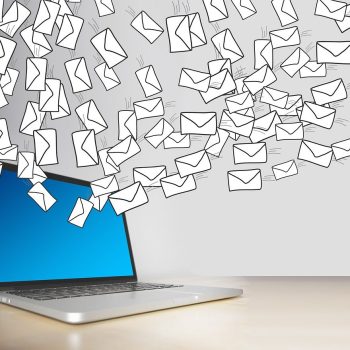
Phishing and ransomware attacks: Given the sheer volume of emails, errors are inevitable. Implementing critical double checking to improve email security is vital.
Business reliance on email creates a very high level of cybersecurity risk. And not just because of the increasing and increasingly intelligent phishing and ransomware attacks. Given the sheer volume of emails sent and received per day (over 300 billion per day in 2020), errors are inevitable.
Employees are entrusted with in-house data and assets, and many are allowed to conduct financial transactions - often without additional clearance. In addition, strict data protection requirements apply not only to the General Data Protection Regulation, but also to industry-specific regulations, so that organizations definitely need reliable processes to reduce the risk of accidental data loss.
Employees make a third of mistakes
According to reports, 34% of all violations are caused by mistakes made by internal employees, and many employees are still unaware of their responsibility for data protection. If sensitive company information falls into the wrong hands, it can have devastating consequences, such as fines, loss of trust and competitive advantage for competitors. BitMEX, one of the largest cryptocurrency trading platforms in the world, inadvertently released thousands of customers' private email addresses when they sent a group email without using the BCC feature. But how can such a mistake be avoided? Employees need a way to better manage their email functions, where they are made aware of potential mistakes before they hit the submit button. For example, by displaying the addresses in the To, CC and BCC fields.
Additional levels for more security
Few organizations have a clear strategy for helping their employees understand how quickly a small mistake can turn into a real risk to the company. And even fewer have a strategy to reduce this risk and prevent their employees from becoming a threat from within. But more importantly, they may not even know that there is a solution that can create an additional level of security awareness among employees.
Companies can help their employees avoid simple mistakes such as incorrectly addressed emails by offering a simple security check that asks users to confirm the identity of the address (es) and any file attachments. The solution can be configured to work at the department or user level. For example, a company wants to prevent the HR department from inadvertently sending sensitive personal information to someone in-house, so it requires confirmation of all emails.
Reliable technology relieves employees
In addition to confirming email addresses and file attachments, the technology can also search for keywords in email content using data loss prevention rules, and each company can set its own requirements and parameters as defined by the company's security protocols. All emails and file attachments containing these keywords will be reported and will require an additional validation process before being sent. The work processes are not disrupted and users have the opportunity to check a second time whether the data should really be shared with the recipient (s).
The essential "break"
Having an important tool that requests a second check and warns when a bug is about to occur helps companies reduce the risk of bugs and the potentially devastating consequences they can have on the business. Unintentional CCening of a customer is prevented, even earlier than that of a colleague with a similar name, since the customer's domain is not on the approved list and is therefore automatically highlighted. That has never been more important than it is today, as employees work in different locations in the course of hybrid working. Such tools can support mixed operating system environments, and DLP add-ons can be assigned to specific departments and groups that handle sensitive data such as employee or legal data.
Such a tool is key for companies, and strengthens the safety culture created through education and training with a helpful solution that helps users make the common email mistakes that are inevitable when employees are distracted, tired or stressed are. It provides an essential "pause" that gives individuals the assurance that the emails were being sent to the right people and with the right file attachments.
More at VIPRE SafeSend
